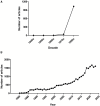Editorial: Animal-friendly methods for rodent behavioral testing in neuroscience research
- PMID: 38983871
- PMCID: PMC11232432
- DOI: 10.3389/fnbeh.2024.1431310
Editorial: Animal-friendly methods for rodent behavioral testing in neuroscience research
Keywords: animal welfare; animal-friendly testing; behavioral testing; refinement; rodents.
Conflict of interest statement
The authors declare that the research was conducted in the absence of any commercial or financial relationships that could be construed as a potential conflict of interest. The author(s) declared that they were an editorial board member of Frontiers, at the time of submission. This had no impact on the peer review process and the final decision.
Figures

Comment on
- Editorial on the Research Topic Animal-friendly methods for rodent behavioral testing in neuroscience research
References
-
- Akhtar S. (2011). “Animal welfare and animal pain: can pain sometimes be worse for them than for us?”, in The Oxford Handbook on Ethics and Animals, eds. T. L. Beauchamp and R. G. Frey (Oxford: Oxford University Press; ), 495–518.
-
- Bains R. S., Cater H. L., Sillito R. R., Chartsias A., Sneddon D., Concas D., et al. (2016). Analysis of individual mouse activity in group housed animals of different inbred strains using a novel automated home cage analysis system. Front. Behav. Neurosci. 10, 106. 10.3389/fnbeh.2016.00106 - DOI - PMC - PubMed
-
- Bentham J. (1789). An Introduction to the Principles of Morals and Legislation. London: Thomas Payne and Son.
Publication types
LinkOut - more resources
Full Text Sources

